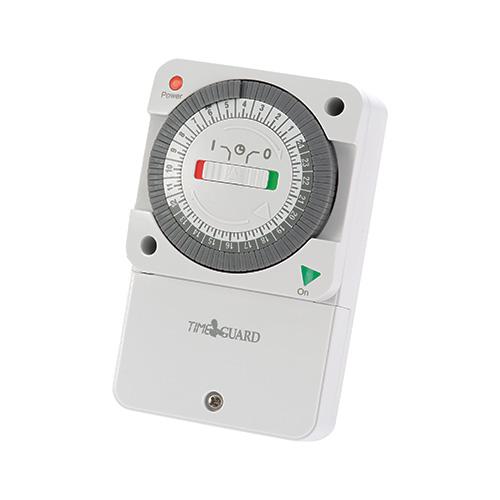We’d like to remind Forumites to please avoid political debate on the Forum.
This is to keep it a safe and useful space for MoneySaving discussions. Threads that are – or become – political in nature may be removed in line with the Forum’s rules. Thank you for your understanding.
📨 Have you signed up to the Forum's new Email Digest yet? Get a selection of trending threads sent straight to your inbox daily, weekly or monthly!
Switch timer
Comments
-
I am with octopus, I'm just trying to find ways to put more money in our pockets rather than the *insert rude word* energy companies pockets.
Each January I try to drive bills down, review spending etc06/06/2023 mortgage mort dateJUST BRING IT1 -
Have you got a smart meter? Honestly just move to tracker if you do.inigma said:I am with octopus, I'm just trying to find ways to put more money in our pockets rather than the *insert rude word* energy companies pockets.
Each January I try to drive bills down, review spending etc
This is based on what we presume is you have an electric boiler supplying radiators perhaps you can send some pics?0 -
@inigma Are you on an E7 tariff ? If so can you give us a night/day use split please.
You mention putting timers on your heaters - that is suggesting to me that you have panel heaters ; storage heaters would already have a master timer alongside your meter.Never pay on an estimated bill. Always read and understand your bill0 -
Make sure it's not a mechanical timeswitch like this one.

If there's a power cut, the times will go adrift. That could work out very expensive if you didn't notice (e.g. if it was overnight or you were out) and you're on a multi-rate tariff such as Economy 7.
0 -
You can buy timers for immersion heaters that draw 3 kW of power. An electric boiler will draw more power than this and I don't think timers that cope with the higher power load of an electric boiler are so readily available. But ask your electrician; they should know.
The alternative is to use a programmable room thermostat that you can use to control the temperature and also turn the boiler on and off.Reed0 -
It sounds like you are describing the standard immersion heater arrangement with E7; if so, it's a hot tank not a boiler.The lower switch will be a circuit controlled by the meter so that it's live overnight. The immersion heater will be at the bottom so that you get a full tank of hot water on the cheap rate. It should be left on.The upper switch will be a 24h circuit that can give a short boost at expensive daytime rates if you've run out of hot water. It should be left off.0
-
Gerry1 said:It sounds like you are describing the standard immersion heater arrangement with E7; if so, it's a hot water tank not a boiler.And, unless you're taking a hot bath every hour of the day, there's no way that a hot water tank will get through 33kWh of electricity in a day.@inigma how do you heat your flat?
N. Hampshire, he/him. Octopus Intelligent Go elec & Tracker gas / Vodafone BB / iD mobile. Ripple Kirk Hill Coop member.Ofgem cap table, Ofgem cap explainer. Economy 7 cap explainer. Gas vs E7 vs peak elec heating costs, Best kettle!
2.72kWp PV facing SSW installed Jan 2012. 11 x 247w panels, 3.6kw inverter. 34 MWh generated, long-term average 2.6 Os.1 -
Description reads to me of a HW cylinder with CW storage tank above aka Combination Cylinders. https://www.heatandplumb.com/acatalog/telford-maxistore-direct-copper-combination-cylinder-bcd18545ev is an example.
Two immersions are usually to make use of cheap off peak electricity overnight (lower) and the boost during peak rate daytime if required.
Both immersions will/should have thermostats that switch on/off when needed. Not a lot will be saved by using a timer, especially for a family using a fair amount of water. Water in cylinder will lose heat at broadly the same rate and that heat lost will need replenishing when switched back on.
Immersion heater timers are available though and don't cost a lot. They may require an electrician to wire in if the OP isn't competent/confident to do so? Landlord permission may be required.
I've calculated that the heat loss alone of my large HW cylinder 210 litre capacity (with no water used) at today's standard (SVR) 29p/kWh rate electricity is around 2 kWh per day or around £211 per annum. The exact number will depend on exact make and model. Such a cylinder will - if emptied of HW - take around 3 hours or more to reheat the tank (9 kWh +2 for heat loss) = £3.19 each day = £90 or thereabouts each month.
So the flat's room heaters will, in fact, be the greater cause of a £300 monthly consumption.
1 -
Hey, we don't really use the heaters, it's an air pump system which double up as an extractor fan (I live in a dodgy flat built by Irish cowboy builders).l, we got our windows redone 2 years ago and our flat holds the heat so we only switch the heat pump on when we are showering for the extractor fan bit.06/06/2023 mortgage mort dateJUST BRING IT0
-
We love in a flat and as such our electricity box is in the hall way meaning octopus can't install a smart reader, as much as I would love one.BellaBlondykeTheThird said:
Have you got a smart meter? Honestly just move to tracker if you do.inigma said:I am with octopus, I'm just trying to find ways to put more money in our pockets rather than the *insert rude word* energy companies pockets.
Each January I try to drive bills down, review spending etc
This is based on what we presume is you have an electric boiler supplying radiators perhaps you can send some pics?06/06/2023 mortgage mort dateJUST BRING IT0
Confirm your email address to Create Threads and Reply

Categories
- All Categories
- 352.8K Banking & Borrowing
- 253.8K Reduce Debt & Boost Income
- 454.7K Spending & Discounts
- 245.9K Work, Benefits & Business
- 601.9K Mortgages, Homes & Bills
- 177.7K Life & Family
- 259.8K Travel & Transport
- 1.5M Hobbies & Leisure
- 16K Discuss & Feedback
- 37.7K Read-Only Boards







